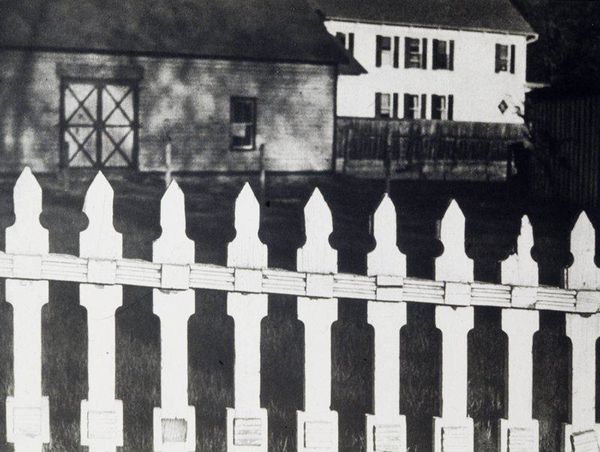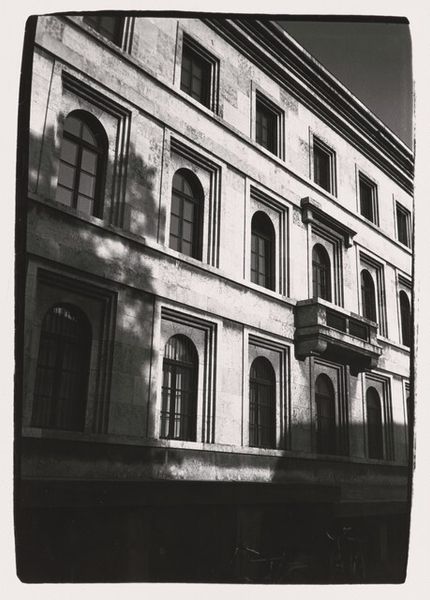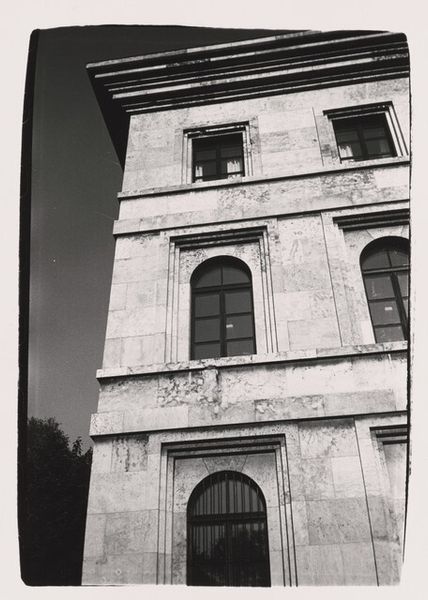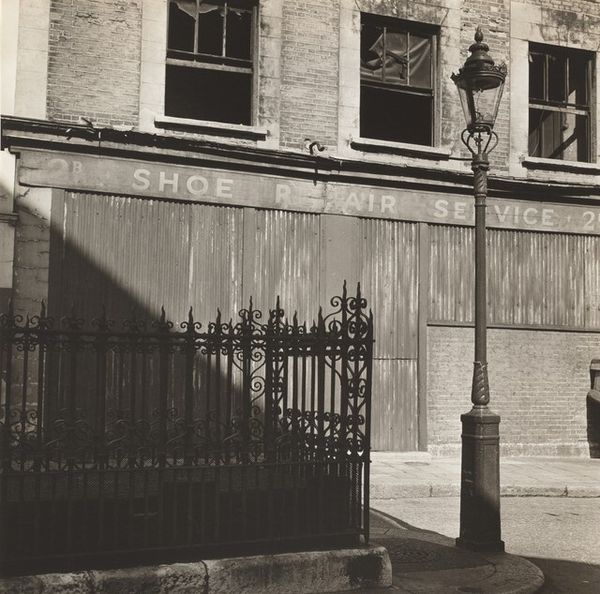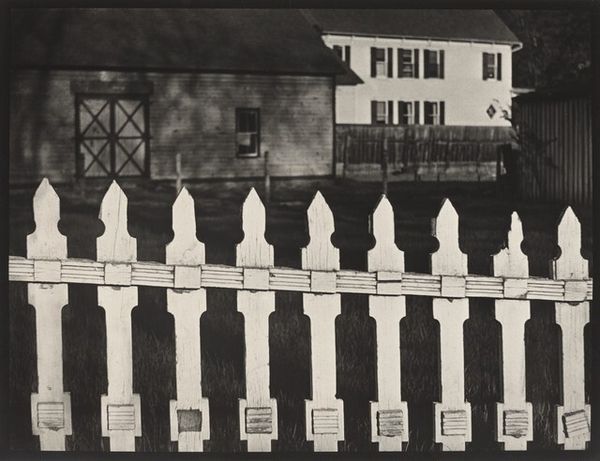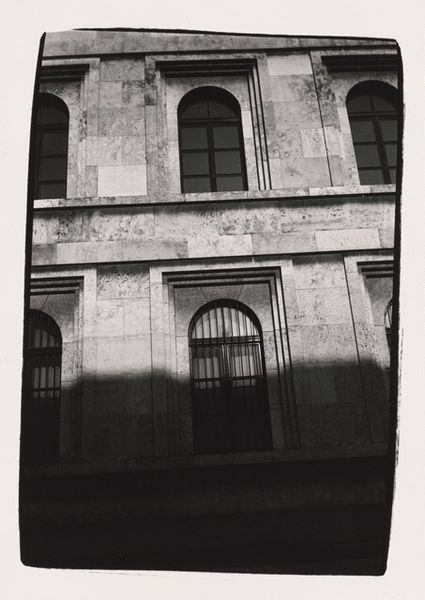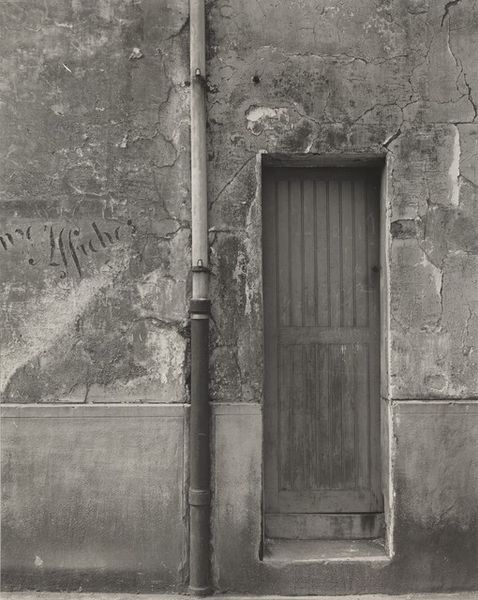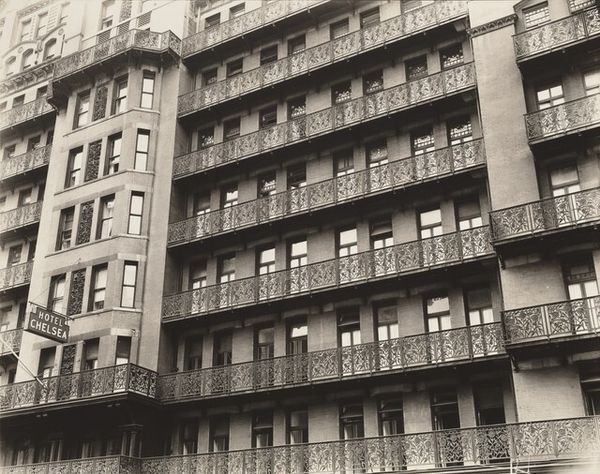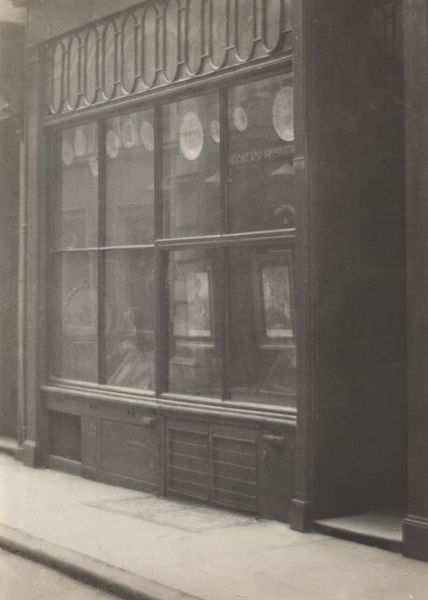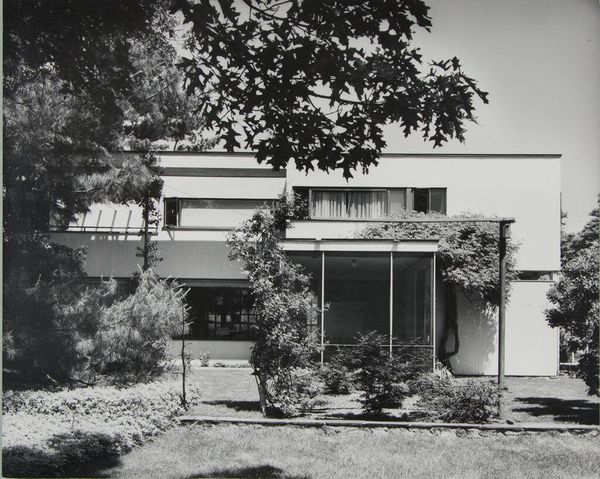
photography, gelatin-silver-print
#
black and white photography
#
sculpture
#
black and white format
#
photography
#
black and white
#
gelatin-silver-print
#
monochrome photography
#
cityscape
#
monochrome
#
modernism
#
monochrome
Dimensions: overall: 23.8 x 20.2 cm (9 3/8 x 7 15/16 in.)
Copyright: National Gallery of Art: CC0 1.0
Editor: So, this is Bill Brandt's "The Reform Club, Pall Mall," a gelatin-silver print from around the 1930s. It's quite a striking image, almost like a stage set with those dramatic shadows and the building's rigid facade. It feels both imposing and still somehow...quiet. What do you see in it? Curator: I see echoes of a vanished era, a silent witness to shifting social structures. The Reform Club itself, founded in the 19th century on principles of political progress, here stands framed through Brandt's lens as almost monolithic. Do you notice the window awnings? Editor: Yes, they create a definite rhythm, alternating light and shadow. Curator: Precisely. Those striped awnings, partially drawn, create a symbolic language. One is completely closed, suggesting something concealed or ended; another half-open, a partial revelation, and one fully open and transparent to show what’s inside. What emotions or ideas might those symbols be conveying to us? Editor: Perhaps a commentary on transparency versus hidden agendas within political institutions? Curator: Possibly! Also look how the architecture conveys this silent symbolism. Note the classical details, the balustrade, the symmetry – they speak of order, tradition, but in monochrome, drained of vibrancy, they hint at something ossified. Think about cultural memory here. The club would have been known as a center for liberalism. Does Brandt suggest that liberalism has lost its shine, faded into grayness in interwar Britain? Editor: I hadn't considered that specific historical reading. It's fascinating how the formal elements support the cultural symbolism, the monochrome adding this sense of fading memory and past glory. Curator: Indeed, Brandt prompts us to look beneath the surface and decode the layered messages within seemingly simple architectural scenes. Editor: It's been insightful. I see how Brandt uses the visual language of photography to express complex socio-political commentary. Curator: The emotional power of an image can transcend its literal subject and make one question their history.
Comments
No comments
Be the first to comment and join the conversation on the ultimate creative platform.
